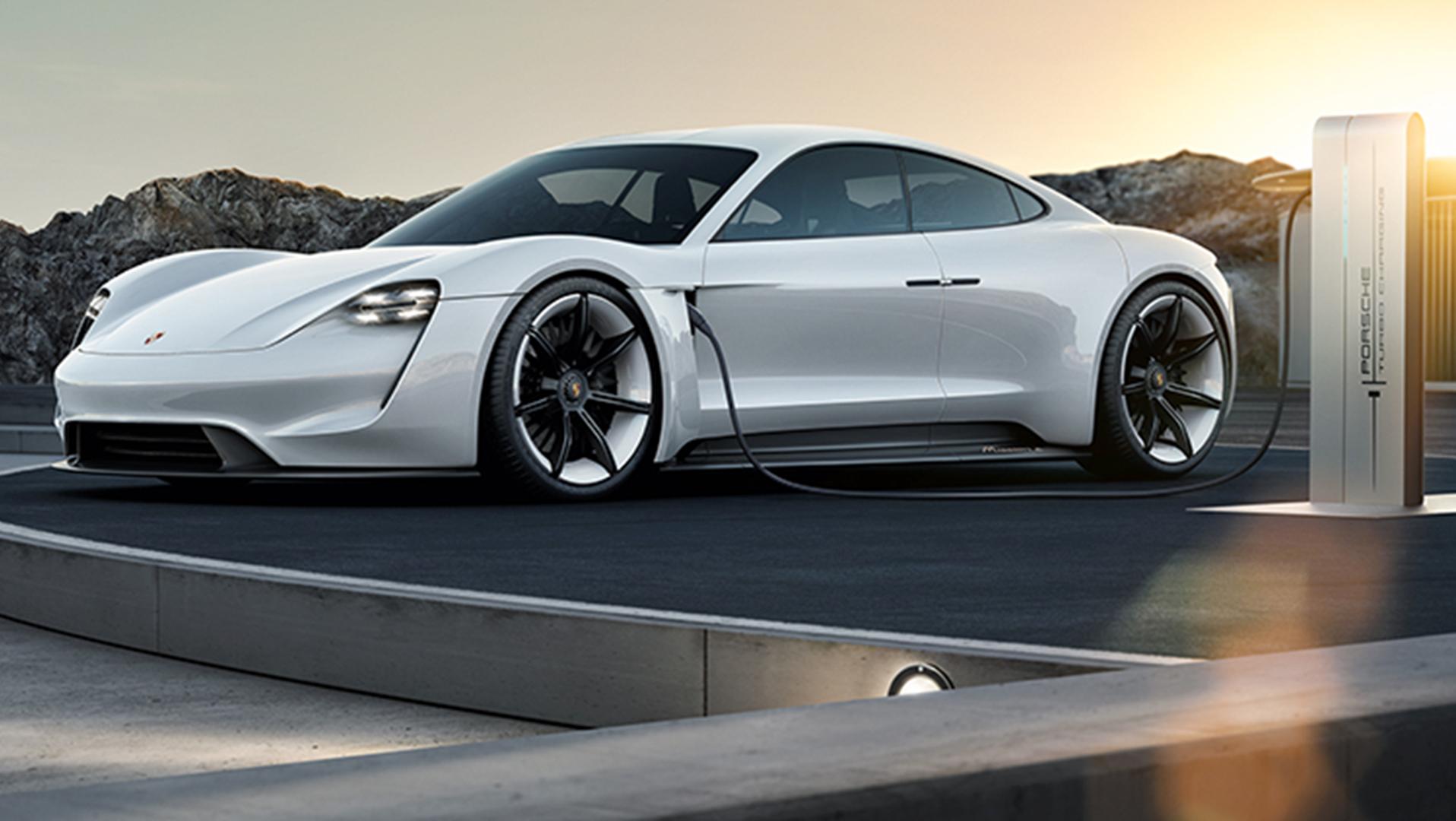
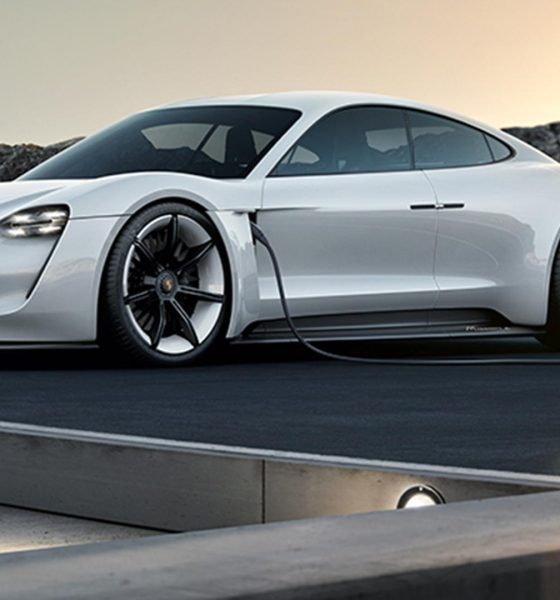
News
Porsche Taycan charging times to be 2X faster than Tesla’s Superchargers
When the Porsche Taycan starts production next year, the electric car market will be even more saturated than it is today. Tesla’s Model 3 would likely be at a production rate of 10,000 units per week. Electric cars from veteran carmakers, such as Jaguar’s I-PACE, Mercedes-Benz’s EQC and Audi’s e-tron, would be in the market as well.
For Porsche, this is not a problem. During the recently held Rennsport Reunion, a gathering of Porsche enthusiasts in Monterey, CA, the German legacy automaker noted that the Taycan would make a mark in the electric car market not because it was the first to enter production. Rather, it would establish itself as a competitor with its driving dynamics and rapid charging times. Detlev von Platen, Porsche’s executive board member for sales and marketing, described the company’s stance on the Taycan in a statement to Fortune.
“We don’t need and don’t want to be the first. It doesn’t make any sense to drive fast and then wait two hours to charge batteries. Achieving an 80% charge in a quarter of an hour is an argument for us.” he said.
Quite unlike the strategy employed by other legacy automakers like Jaguar and Mercedes-Benz, whose vehicles largely rely on established charging infrastructure, Porsche is looking to develop its own charging network. Just like Tesla’s ever-growing Supercharger Network, Porsche’s 350 kW Electric Pit Stops are designed to serve as an ultra-fast charging system for its electric vehicles. Porsche is even taking the idea of fast chargers a step further, stating that it is aiming to design a system that could recharge 80% of the Taycan’s batteries in just 15 minutes.
If Porsche successfully rolls out its Electric Pit Stops, it would create a network of rapid chargers that are twice as quick as Tesla’s Supercharger Network, which have an output of ~120 kW and are capable of recharging the company’s electric vehicles up to 80% in 30 minutes. That said, Tesla is also preparing the rollout of its Supercharger V3, which is expected to have an output of 200-250 kW. During Tesla’s Q1 earnings call, Elon Musk shared a critique of 350 kW systems, stating that such an output could compromise the battery.
“The thing about a 350 kW charger is that it doesn’t actually make a ton of sense, unless you got a monster battery pack or have like a crazy high C rating. We think 350 kW for a single car; you’re gonna frag the battery pack if you do that. You cannot charge a high-energy battery pack at that rate, unless it’s a very high kW battery pack. So, (for us), something along the couple of hundred, 200-250 kW,” Musk said.
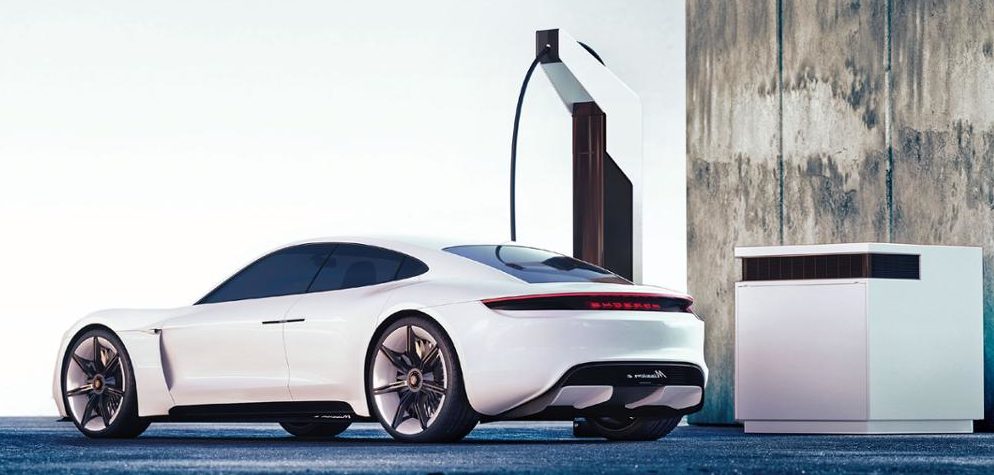
Ultimately, Porsche is counting on the strength of its pedigree and the car’s driving performance to push the Taycan forward. The Taycan is Porsche’s first all-electric car, and it would be the flagship of the company as it transitions to an electrified fleet in the coming years. Considering that Porsche has already abandoned diesel and committed to electrifying 50% of its fleet by 2025, the Taycan is a vehicle that must resonate with the company’s loyal consumer base. Michael Steiner, Porsche research and development executive board member, believes that the Taycan will be up to the task.
“Even if you’re not looking for an EV, I’m convinced there will be a lot of customers driving it for performance,” he said.
Porsche is already seeing encouraging signs from its customers. Executives of the legacy automaker note that the demand for its green vehicles is increasing. In Europe, for example, plug-in hybrid variants of the Porsche Panamera already comprise 60% of the vehicle’s sales. Porsche is aiming to produce 20,000 units of the Taycan every year, and so far, the reception of the vehicle has been better than expected. In Norway alone, 2,000 reservations have been filed for the car. Pre-orders for the Taycan have started in the United States as well.

News
Tesla rolls out tasty new trade-in deal for a limited time
Tesla has rolled out a tasty new trade-in deal in the United Kingdom for a limited time, knocking just over the equivalent of $5,000 off of the price of a new or inventory Model 3 or Model Y.
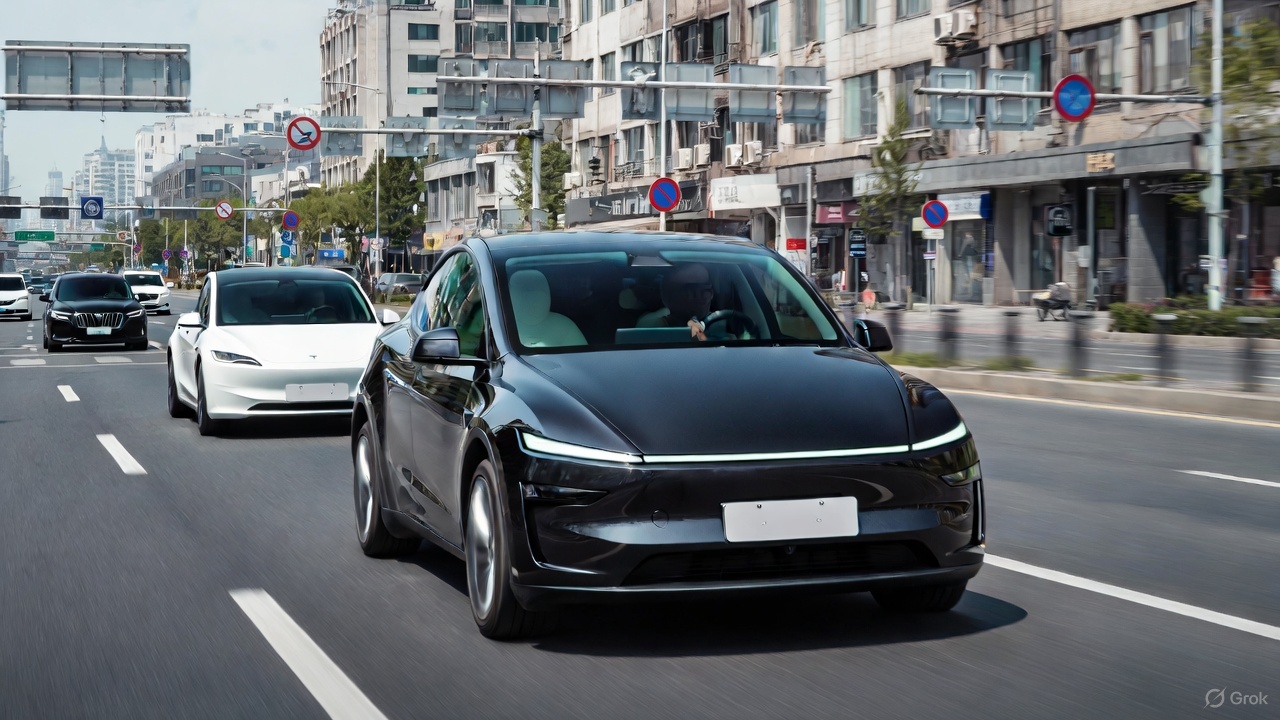
Tesla has rolled out a tasty new trade-in deal in the United Kingdom for a limited time, knocking just over the equivalent of $5,000 off of the price of a new or inventory Model 3 or Model Y.
The move, which could be a great way to incentivize sales in the United Kingdom, will take off £3,750 ($5,043) from the price of either of Tesla’s two most popular models, but it’s only valid until March 31, 2026. It requires the order and delivery to take place within the first quarter to qualify for the discount.
NEWS: Tesla UK is offering a £3,750 ($5,043 USD) trade-in bonus towards a new Tesla if you trade in your current car.
Must order and take delivery before March 31, 2026. pic.twitter.com/ZBLoZaLMvT
— Sawyer Merritt (@SawyerMerritt) January 2, 2026
The bonus is designed to lower the cost barrier for switching to electric vehicles, stacking the £3,750 on top of the actual trade-in value of any eligible car — this includes petrol, diesel, or even an EV from another automaker. It applies to both new builds and inventory vehicles, including test drive and showroom models, but excludes certified pre-owned Teslas.
This promotion comes amid intensifying competition in the European EV sector. Chinese giant BYD, which snatched the EV sales title from Tesla for 2025, has been aggressively expanding in the European market, undercutting prices and capturing market share with its widely affordable models, including the Seagull.
Tesla’s strategy echoes similar incentives that have been offered in other markets at different times. With UK EV adoption hovering around 20 percent of new car sales in 2025, such deals could accelerate the transition, especially as government mandates phase out fossil fuels by 2035.
There have been enthusiastic reactions to the offer on X, the social media platform owned by Tesla CEO Elon Musk. These incentive programs are few and far between, and are never predictable in terms of availability. However, Tesla could be using this discount to get the year off to a good start.
For potential buyers, the deal underscores Tesla’s agility in a competitive landscape. As EV infrastructure improves and battery tech advances, incentives like this could tip the scales for those who might be more hesitant to make the jump.
With Q1 2026 deliveries ramping up and Tesla coming off a yearly decline in deliveries, the company is undoubtedly looking to push things forward and get the year off to a great start.
News
Lucid and Uber team with Nuro for new robotaxi program with Gravity SUV
The plan currently is to launch it to the public in the Bay later this year.
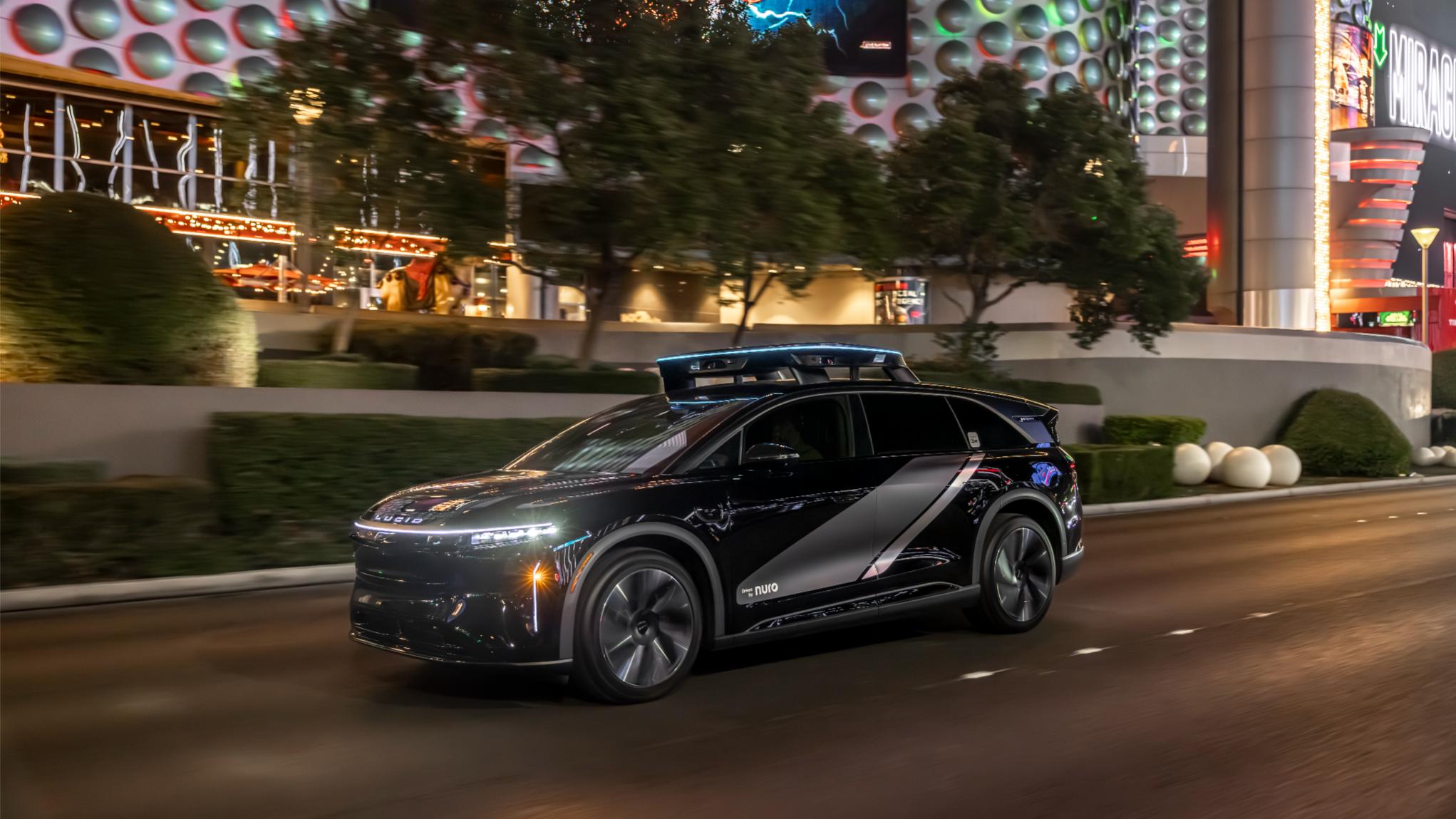
Lucid and Uber are teaming up with Nuro to launch an autonomous robotaxi program utilizing the automaker’s Gravity SUV. The project will be unveiled at CES 2026, introducing an in-cabin rider experience completely designed by Uber, the world’s largest ride-sharing service.
Back in 2025, the partnership between the three companies was announced, aiming to launch a unique ride-sharing platform using over 20,000 Lucid vehicles equipped with the Nuro Driver technology. The vehicles are owned and operated by Uber.
The companies have already initiated some testing in the San Francisco Bay Area, which is a big step in the right direction for the project. The plan currently is to launch it to the public in the Bay later this year. Nuro will lead the testing using robotaxi engineering prototypes that are supervised by autonomous vehicle operators.
Currently, there are over 100 robotaxis in the Engineering Test Fleet.
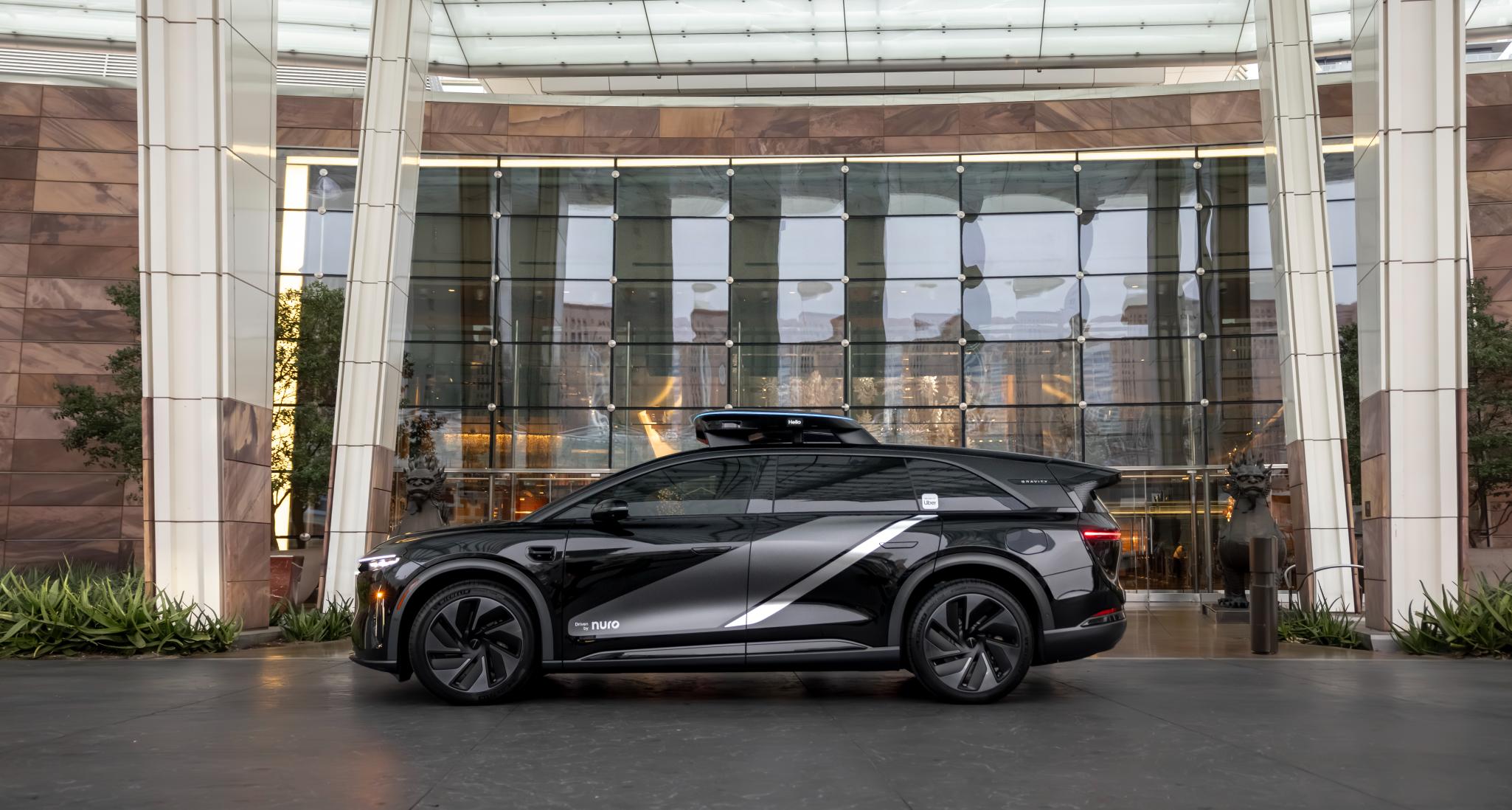
The Gravity vehicles are fitted with a next-gen sensor array featuring high-res cameras, solid-state LiDAR sensors, and radars that will provide a 360-perception model, as well as a “purpose-built roof-mounted halo designed to maximize sensor visibility,” which is seen on top of the Gravity unit above.
The halo also has integrated LEDs to help riders more easily identify the correct vehicle by displaying their initials. The halo will also provide clear status updates from pickup through dropoff.

These units for the robotaxi program between the three companies will start being produced later this year at Lucid’s Arizona AMP-1 factory.
Uber chose the Lucid Gravity specifically due to its “unprecedented comfort” and its reputation, as it was named to Car and Driver’s 10 Best for 2026. But Uber is customizing some things for the Gravity so that it is specifically catered to robotaxi riders:
- For the first time, Uber is designing the in-vehicle rider experience, which will include interactive screens with entertainment and climate control options, as well as support contacts and vehicle maneuver requests, like a request to pull over.
- It will also have in-vehicle visualization, showing what the robotaxi sees and its path in real-time. This will be a nice transition for those who are skeptical about driverless vehicles, and will show what the vehicle and its sensors, LiDAR, and cameras see.
- The Gravity is also a sizeable SUV, which will give riders space for themselves and their luggage.
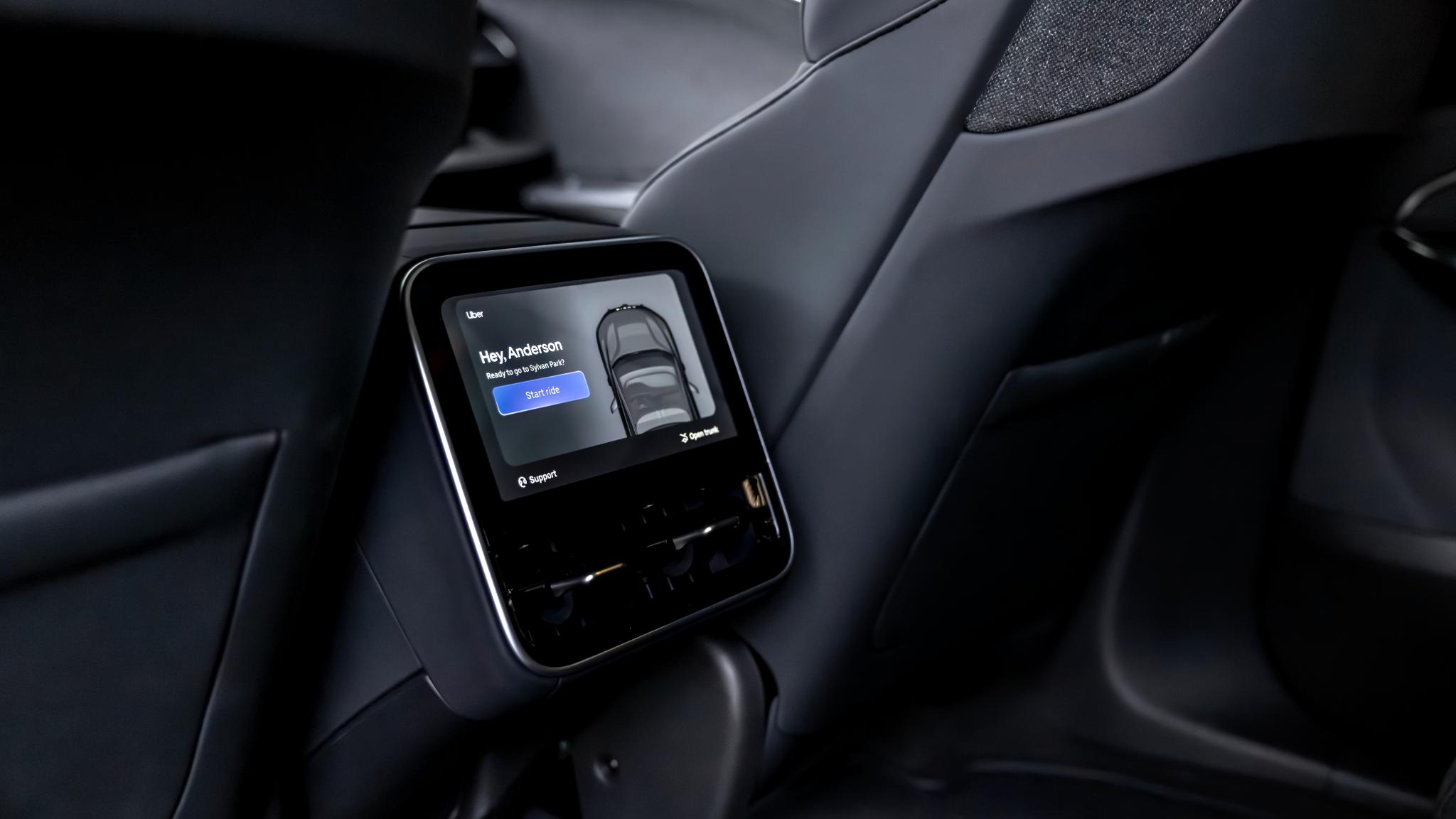
This is the latest application of a ride-hailing platform that leans on autonomy for its operation, essentially phasing out the need for human drivers in various markets, starting with the Bay Area.
More companies are dipping their toes in the project, giving them the opportunity to establish some early momentum, as there are only a handful of companies that are currently operating this in the United States. Uber, Lucid, and Nuro aim to be the next, and initiating this program at this time is big for their chance at success.
News
Tesla Cybercab test fleet expands in Austin and Bay Area
In total, the Robotaxi fleet is comprised of 139 total vehicles in both Austin and the Bay Area. The vast majority of these units are Model Y cars, but the Cybercab is the most recent addition to the fleet.
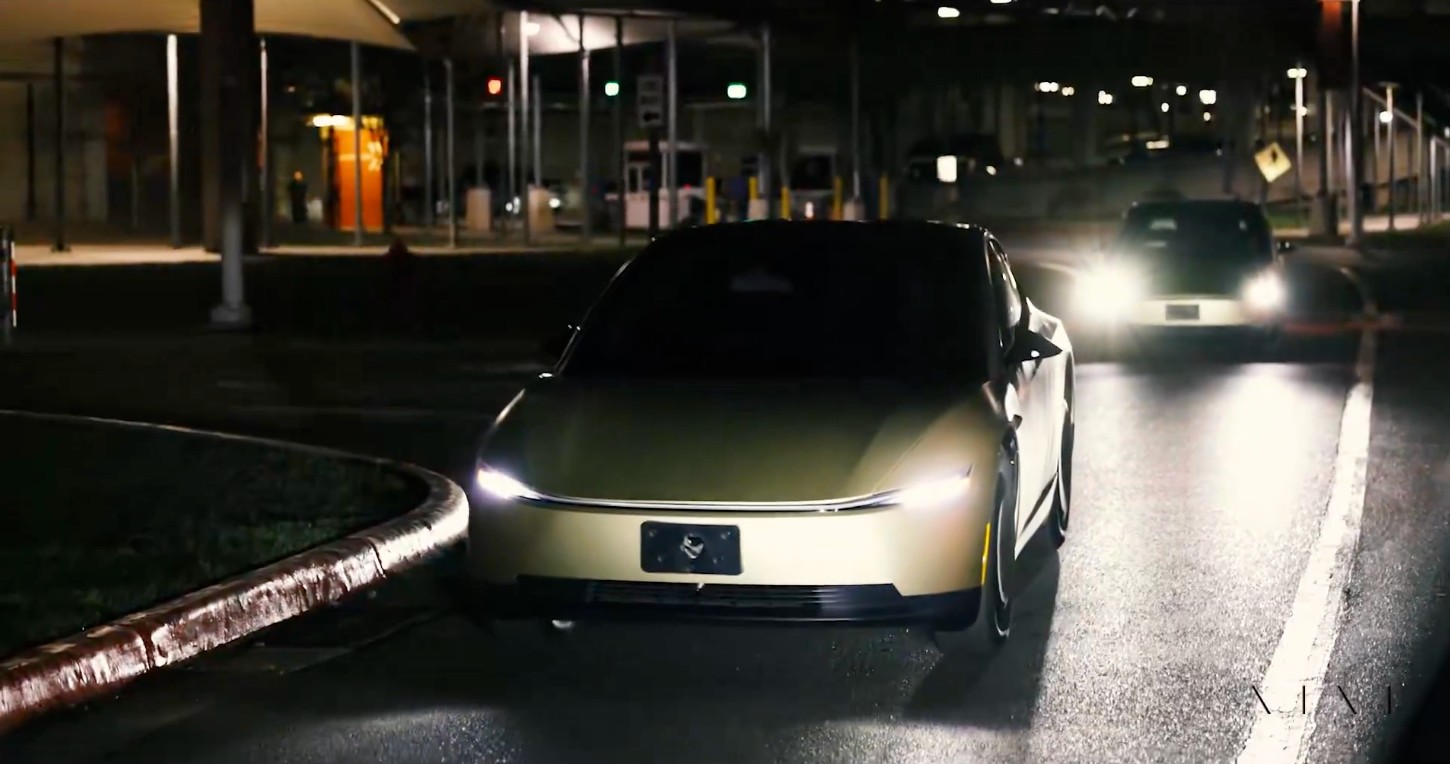
Tesla has expanded its fleet of Cybercab test units in both Austin and the Bay Area of California, as the vehicle is heading toward the first production stages, hopefully early this year.
As the first few units were spotted in Austin late last year, Tesla is now operating seven total Cybercab units in testing, three of which were spotted over the weekend in Texas. Bay Area testing just started on January 3, with both units also being added to the fleet on Saturday and Sunday.
In total, there are seven Cybercabs now operating, according to Robotaxi Tracker, each with different license plates that have been observed over the course of the last several weeks; the first unit was spotted in Austin on December 18.
The future should look like the future, indeed.
The Cybercab really changes the look of the roads, but without the shock factor of the Cybertruck. It’s a pretty good balance, imo.pic.twitter.com/PM0KbjzhxR
— TESLARATI (@Teslarati) December 22, 2025
The expansion of the Cybercab test fleet is a slow but steady process that Tesla is taking to get the car on public roads ahead of its initial production stages.
CEO Elon Musk said last week that Tesla has already started some test production phases of the vehicle at Gigafactory Texas, which is located outside of Austin.
Tesla Cybercab tests are going on overdrive with production-ready units
However, it will likely be some time before Tesla actually adds it to the fleet for rides that are available to the public. Tesla plans to build it without a steering wheel or pedals, so the company will have to reach Level 5 autonomy at that point before customers can hail rides and take it to their destination.
In total, the Robotaxi fleet is comprised of 139 total vehicles in both Austin and the Bay Area. The vast majority of these units are Model Y cars, but the Cybercab is the most recent addition to the fleet.








